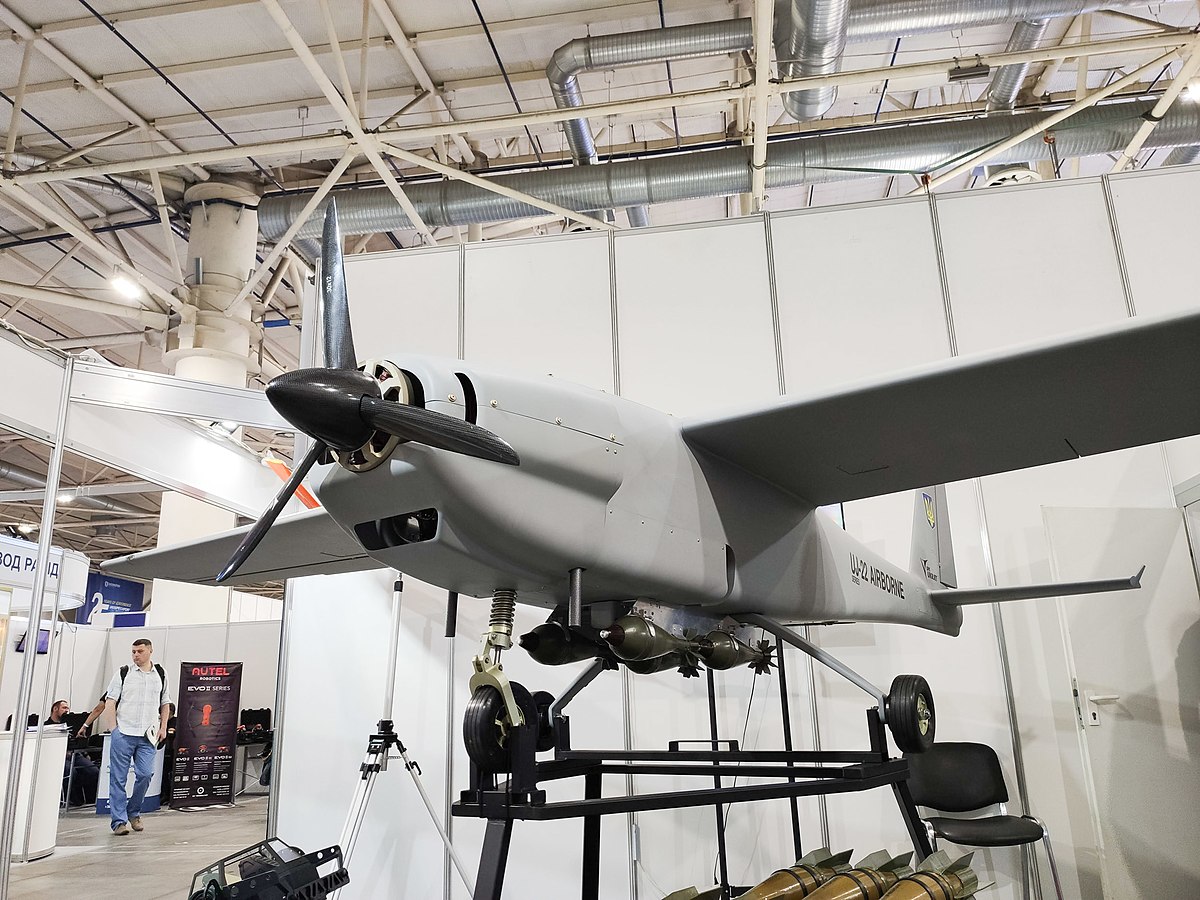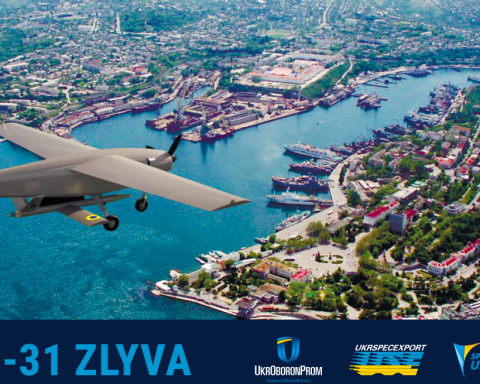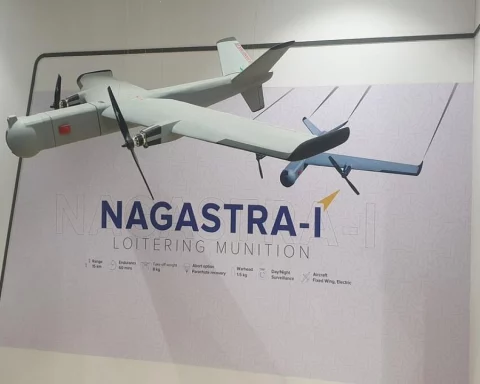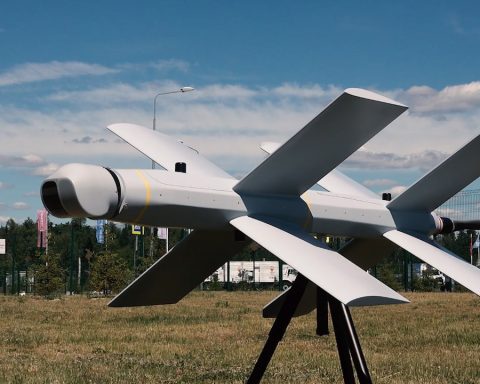In recent years, Ukraine has demonstrated a proactive stance toward modernizing its military capabilities. One key aspect of this effort has been the development of unmanned aerial vehicles (UAVs), popularly called drones, intended to bolster Ukraine’s reconnaissance, surveillance, and combat capabilities. Among these UAVs is the UJ-22 Airborne, developed by the Ukrainian firm UKRJET, which has garnered significant attention from military experts. This article seeks to delve into the characteristics and capabilities of the UJ-22 Airborne in detail.
Introduction
The UJ-22 Airborne is a versatile drone primarily intended for military purposes. This scaled-down aircraft is capable of autonomous operation or remote control from a command center, with a range of up to 100 km. The drone’s maximum flight range extends up to 800 km, enabling it to conduct long-range missions effectively.
The UJ-22 Airborne boasts advanced sensors, cameras, and communication systems, allowing it to undertake various tasks. These include reconnaissance, surveillance, target acquisition, and even offensive missions. This drone is equally adept at performing intelligence operations, search and rescue, and supporting the military, police, and rescue services. In addition to carrying ammunition, the UJ-22 Airborne can accommodate a camera and optoelectronic station as part of its payload.

Design and Features
The UJ-22 Airborne drone is a highly versatile and capable drone engineered to perform various missions. With a wingspan of 4.2 meters and a length of 3.7 meters, this drone is designed as a small aircraft. It is powered by a gasoline engine reaching 200 km/h speed. Moreover, it can fly at an altitude of up to 5,000 meters and has a maximum endurance of 8 hours.
This drone is designed to operate under extreme weather conditions, making it ideal for long-term missions. It has an impressive endurance capability of up to 6 hours in harsh weather, ensuring its reliability even in difficult environments. These features make the UJ-22 Airborne drone an effective and dependable tool for various applications.
Payload and Armament
The UJ-22 Airborne drone is a versatile aircraft that can transport various payloads, including specialized equipment and weapons for missions. With a payload capacity of up to 20 kg, it can carry various munitions such as bombs, mines, or other weaponry. The drone can transport four 82 mm mortar mines or up to six PG-7VM munitions of the RPG-7 anti-tank rocket launcher.
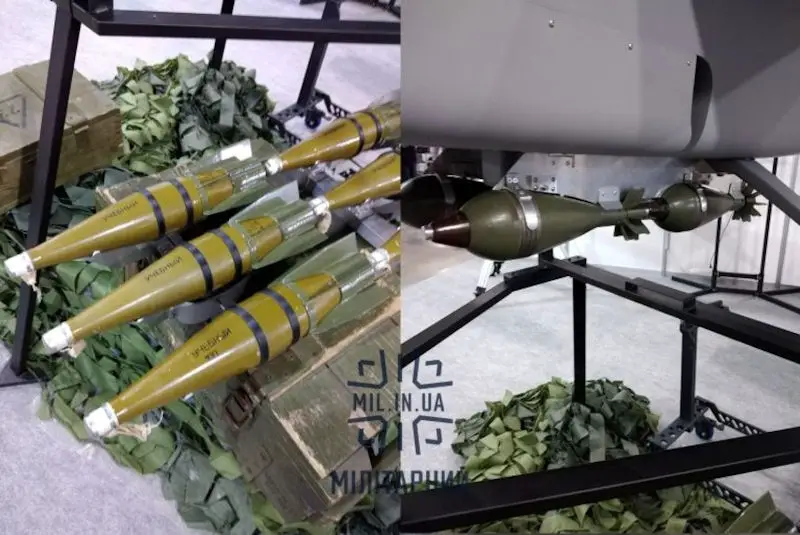
The drone is particularly effective for attacking stationary targets, as it can release its payload on predefined coordinates. This feature allows for precision targeting and maximum impact on the intended target. The UJ-22 Airborne drone also has various control modes to ensure optimal operational performance. Depending on the specific mission requirements, the UAV and payload can be controlled in automatic, semi-automatic, or manual modes.
Sensor and Communication Systems
The UJ-22 Airborne drone has advanced sensors and communication systems that enable it to execute various missions. One of the most critical components of the drone is its 64-megapixel camera, which can transmit real-time images to the ground station. The high-quality imagery produced by the camera is beneficial for reconnaissance and surveillance missions. The drone also features a laser rangefinder capable of measuring distances up to 10 km and a thermal camera that detects objects in complete darkness.
In addition to its sensors, the UJ-22 Airborne drone’s communication system is essential for its successful operation. The drone’s radio communication system can reach up to 100 km and is encrypted to prevent unauthorized access. When the drone needs to operate beyond the 100 km range, it can autonomously follow pre-programmed coordinates and elevation. Notably, the drone features an onboard autopilot system that allows it to fly without a GPS signal, making it useful when the enemy employs electronic countermeasures to block the signal.
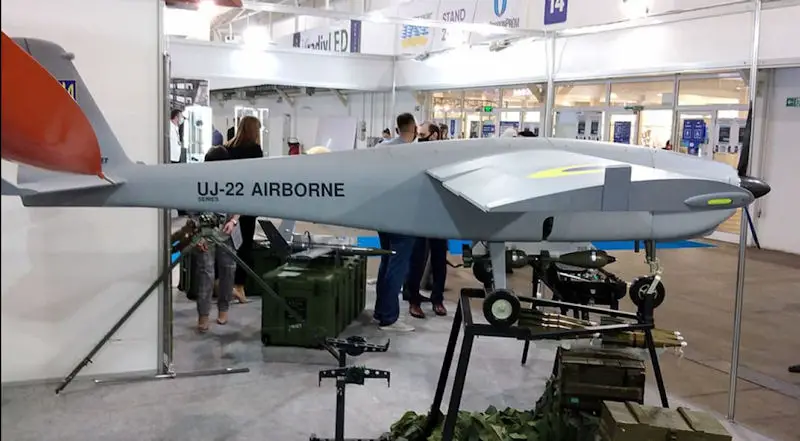
The communication system between the ground control point and the aircraft relies on a digital two-way encrypted microwave data channel and a digital two-way encrypted UHF data channel. The antenna communication system tracks automatically and provides two independent duplicate data channels to ensure reliability. The UJ-22 Airborne drone is operated by two people, the pilot and the payload operator. The operator and the pilot are seated in off-road vehicles equipped with air conditioning, heating, and climate control systems.
Applications
The UJ-22 Airborne drone is a versatile tool with many applications in military operations. Its primary use is in reconnaissance and surveillance missions, where it can gather valuable intelligence on enemy movements and activities. Thanks to its built-in 64-megapixel camera and thermal imaging capabilities, it can provide high-quality battlefield imagery in real-time, making it an effective tool for target acquisition and tracking.
The UJ-22 Airborne’s ability to operate autonomously also makes it ideal for testing hostile air defenses before launching more expensive and capable drones or missiles. With an effective range of up to 100 km, it can gather critical information about enemy defenses and relay it back to ground troops, providing them with accurate and timely information.
In addition to reconnaissance and surveillance, the UJ-22 Airborne can be used for search and rescue operations. Its high-quality camera and thermal imaging capabilities make it an excellent tool for locating and rescuing people in challenging terrain or environments.
The drone can carry various payloads, including free-fall bombs, 82 mm mortar mines, and PG-7VM munitions for the RPG-7 anti-tank rocket launcher. It has a maximum payload capacity of 20 kg and can release its payload on predefined coordinates, making it an effective weapon for attacking stationary targets. It should be noted that the accuracy of hitting a target from a distance of 700 meters has an error of up to 10 meters, which is a relatively high result for uncontrolled ammunition.
To ensure effective operation, the UJ-22 Airborne has a starter generator and an autopilot system developed by the company’s specialists. The drone’s communication system uses a digital two-way encrypted microwave data channel and a digital two-way encrypted UHF data channel, allowing for secure communication between ground control and the aircraft. The complex is managed by two people: the pilot and the payload operator, both of whom are located in off-road vehicles with air conditioning, heating, and climate control systems.
Finally, to counteract enemy electronic warfare systems, the UJ-22 Airborne is equipped with the Xens inertial system, allowing it to fly without GPS and maintain the necessary coordinates. If the drone does not detect an enemy or finds a small target in the barrage zone, it will return and dump unused ammunition in a safe place or land with them, according to Igor Kramarenko.
Combat use
On March 30, 2022, the Russian Defense Ministry released video footage showing the destruction of a UJ-22 Airborne unmanned aerial vehicle in Ukraine by the Pantsir missile and gun system. The drone was carrying an aerial bomb and 82 mm caliber mines under its wing, according to the defense department. The crew of the Pantsir-S combat vehicle detected the unmanned aerial vehicle of the Armed Forces of Ukraine promptly and destroyed it with one missile. The Pantsir missile and gun complex crews are responsible for controlling the airspace in their designated areas, which are a few kilometers away from populated areas, to ensure the safety of the civilian population. After detecting a target, the “Shell” system accompanies and destroys it at a distance of up to 20 km before moving on to another location. Since the beginning of the operation, the Russian Pantsir missile defense systems have destroyed more than 300 drones and dozens of military aircraft.
Attack on Moscow
On May 30, 2023, Moscow and the Moscow region were under an unprecedented drone attack. For an intense hour, Russian air defense systems battled fiercely to intercept the drones targeting the heart of the Russian capital. Still, their efforts were met with varying degrees of success. Some drones avoided interception, striking their intended targets and causing minor damage. Among the identified drones used in the attack, experts suspect the UJ-22 Airborne, a menacing variant similar to those manufactured by Ukrjet.
This particular drone had already made an unwelcome appearance in the Moscow suburbs in February, covering an astonishing distance of up to 800 kilometers. Approximately 30 drones instilled fear and chaos as they appeared over Moscow and the surrounding region during the morning hours. While citizens grappled with the shocking events, authorities worked tirelessly to mitigate the immediate threat and ensure the safety of affected areas.
Reported Unsuccessful Assassination Attempt on Russian President Putin
An investigation by the German newspaper Bild reported that the Ukrainian secret service attempted to assassinate Russian President Vladimir Putin by deploying a kamikaze drone. The alleged incident occurred on April 23 when a drone was launched from Ukraine to target an industrial park near Moscow, where Putin was scheduled to deliver a speech. The UJ-22 drone was armed with 17 kg of explosives and crashed 20 kilometers before reaching its intended target for reasons that are still unclear. Passers-by later discovered the unmanned aircraft.

Technical specifications
| Country of origin: | Ukraine |
| Manufacturer: | LLC NPP Ukrjet |
| Entered service: | 2023 |
| Dimensions and weight | |
| Length: | ? |
| Wing span: | ~ 5 m |
| Height: | ? |
| Weight (empty): | ? |
| Weight (maximum take-off): | ? |
| Engines and performance | |
| Engines: | Petrol engine |
| Engine power: | ? |
| Maximum speed: | 160 km/h |
| Cruising speed: | 120 km/h |
| Service ceiling: | 6 km |
| Range: | 800 km |
| Endurance: | 6 – 7 hours |
| Armament | |
| Bombs: | free-fall bombs, four 82 mm mortar mines, six PG-7VM munitions of RPG-7 rocket launcher |
| Other equipment: | surveillance camera (optional) |
